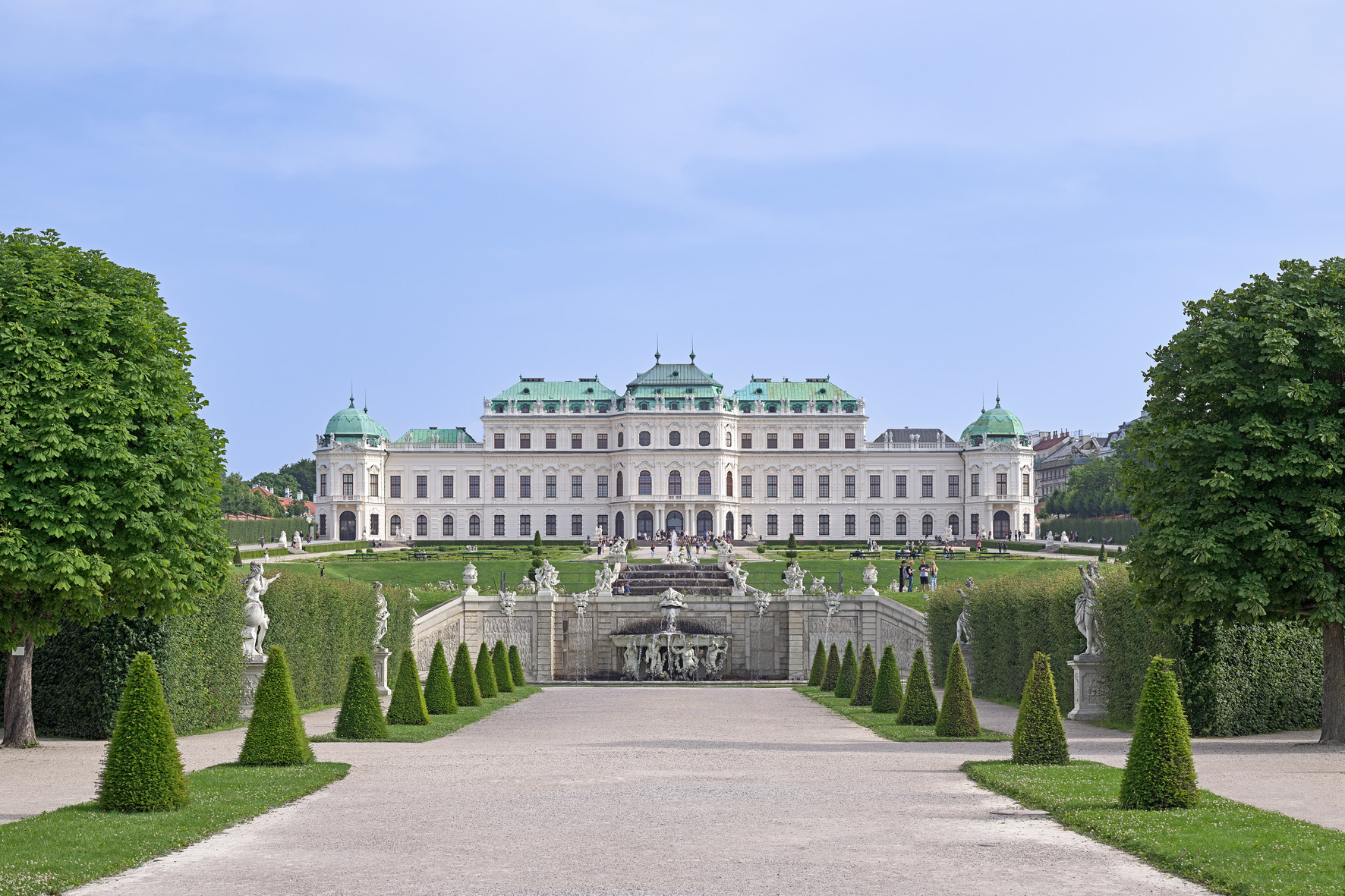
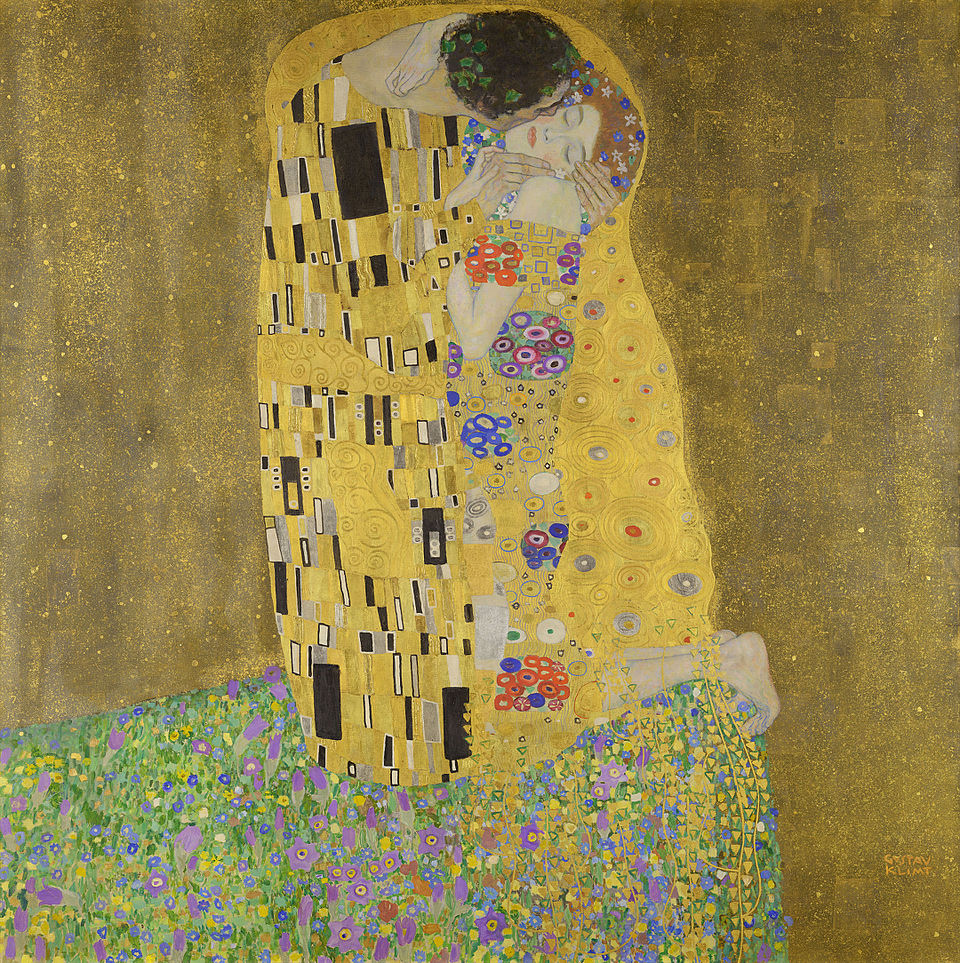
Above: Gustav Klimt, The Kiss, 1907-8, Upper Belvedere, Vienna
The Belvedere is on the itinerary of every tour of Vienna for one reason only: Gustav Klimt’s The Kiss. It makes the museum one of the busiest in the city, and the only one where you really have to pre-book. But the Belvedere is a lot more than just one painting and arguably the world-famous image is one of the less interesting reasons to visit.
The Belvedere is actually a group of three museums: two of them, the Upper and Lower palaces are at either end of a grand formal garden which cascades down a hillside on the south eastern side of the city centre. Built in the early eighteenth century as royal summer residences, they are now a UNESCO World Heritage site. The Upper building houses a permanent collection which includes Klimt’s works, the Lower is mainly home to temporary exhibitions. A further iteration, Belvedere 21, a modernist building originally designed for the Expo 58 in Brussels, is located about ten minutes’ walk away and exhibits contemporary art.

The Upper and Lower Belvederes are architecturally spectacular in their own right. The South façade of the Upper palace almost seems to float, with perfect and dramatic symmetry, behind a huge mirror pool. The entrance hall, which you can easily sweep through distracted by security and ticket checks, is an extravaganza of white stucco. Overly-muscled and Baroquely-twisting Atlases support delicately carved vaulting that leads to the grand staircase up which the crowds ascend. Ignore the throng and instead turn right towards the ground floor galleries which take you on the first phase of a chronological journey. Before you get there, the Carlone Hall, named after its northern Italian fresco-ist, provides an elaborate trompe l’oeil stage-set for a changing contemporary installation. Don’t forget to look up – the Triumph of Aurora on the ceiling is gravity defying illusionism at its best.
The following rooms are quiet and yet full of the most beautiful examples of Early Renaissance Northern European art. German and Dutch painting too often gets sidelined by the dominance of Italy during the fifteenth and sixteenth centuries. By the time you have soaked up the examples here, you will think again. Italian idealisation is replaced by earthy observation, and an obsession with perspective by a focus on detail and character. These are paintings of real people, some ugly, some humorous, all believable. The final, circular room cleverly displays polychromatic sculpture allowing you to walk around and amongst the very realistic figures. Annoyingly, you have to retrace your steps to the entrance hall. From there, you can visit a display chronicling the history of the museum itself in the east wing, or head upstairs.
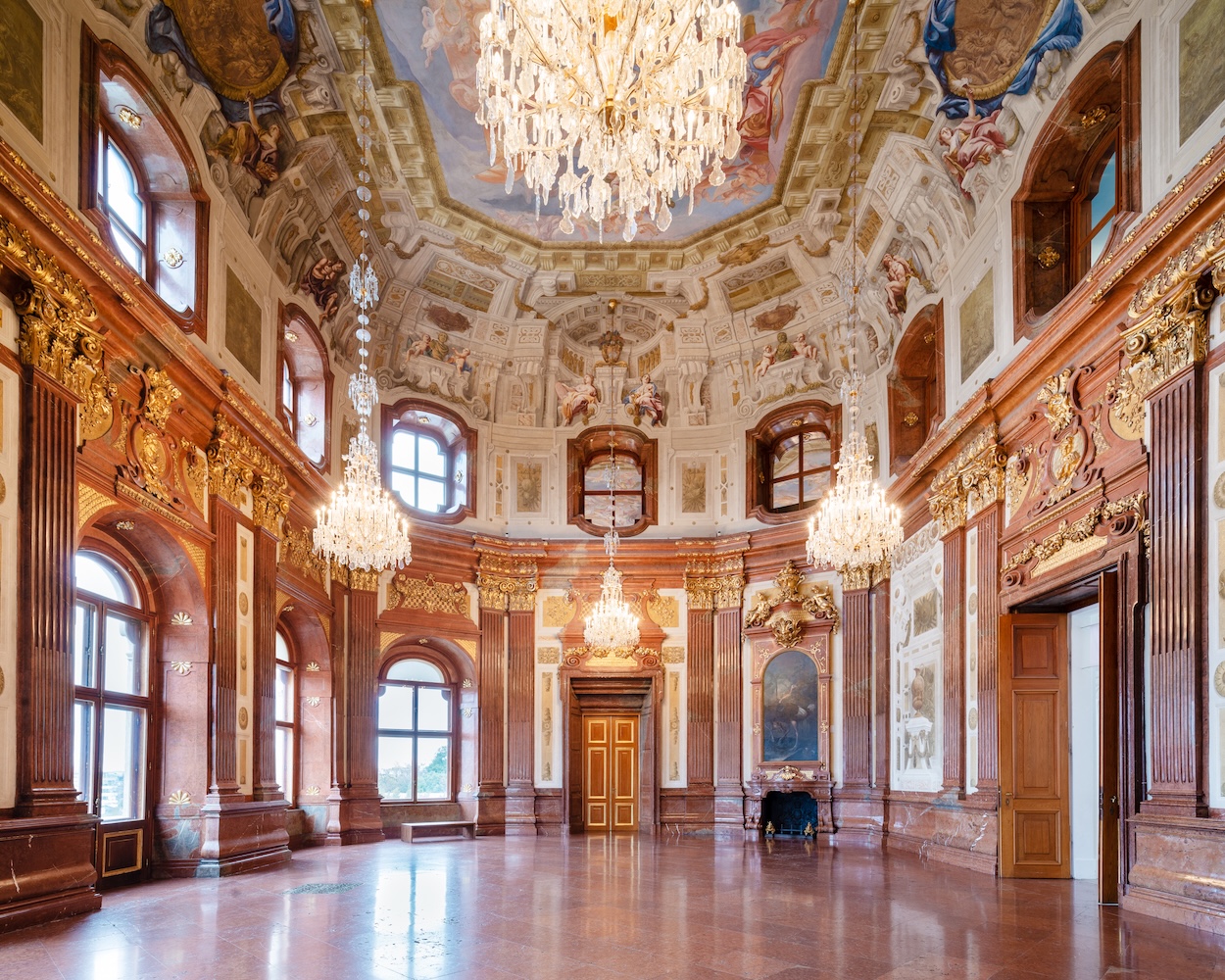
The first floor continues the chronology. Head right and you are taken through a pretty comprehensive survey of (largely) Austrian art from the Baroque to the late nineteenth century. For all but the most dedicated art lover, it starts to get a bit much: a lot of royal portraits and lot of unfamiliar names. It is well labelled with dual language wall texts and well displayed, and if you don’t get bogged down you can find the interesting and the unexpected. David’s own copy his Napoleon Crossing the Alps was an impressive surprise; Anna Maria Punz’s still lifes have a quiet perfection and I had never come across Biedermeier art with its emphasis on everyday life.
Do not give up before you get to the circular room at the end of the wing, where you are greeted by Xavier Messerschmidt’s Character Heads, some comic, some sinister and all down right weird. (There is a full exhibition of his work coming later this year to the Lower Belvedere). Equally, whatever you do, be sure to visit the Marble Hall, a double storey extravaganza of marble, gilt and illusionism, which also is the historically significant setting of the establishment of modern Austria in 1955. None of that really compares, however, to the magnificently bizarre ostriches who strut above one of the fireplaces.

Crossing the central landing you start to feel the crowds growing: this is ‘Vienna 1900’. The Belvedere has an impressive collection of Klimt’s work, besides his most famous painting. It also boasts plenty of other big names including Egon Schiele and Koloman Moser, proving that the early twentieth century is when Austrian art strikes gold (quite literally in the case of the Klimt). Don’t just join the throng of selfie-snappers. Take the time to nudge your way to the front and actually get a look at The Kiss. Like all famous paintings, it is very different in the flesh – Klimt is a much less polished artist, he paints thinly, leaving the canvas texture visible, so that the gold loses its gleam and slickness gives way to subtlety. In life, The Kiss is less beautiful but much more interesting. Is it a romantic embrace or a something more sinister? Are those hands gentle or strangling? Are the couple really teetering on the edge of an abyss?
Climbing another level you continue the story of modernism up to around 1970, with a slight jump back into the late nineteenth century to look at Impressionism. Alongside familiar French names they highlight women Impressionists like Olga Wisinger-Florian and Maria Egner, who I suspect even many Austrian visitors are unfamiliar with. Generally, and without making an issue of it, the Belvedere is very good at promoting previously marginalised artists. The top floor galleries did feel like something of an anticlimax - the rooms are smaller, the décor less ornate - but that may be a reflection of my personal taste and saturation level. With hindsight I might have started at the top and worked down!
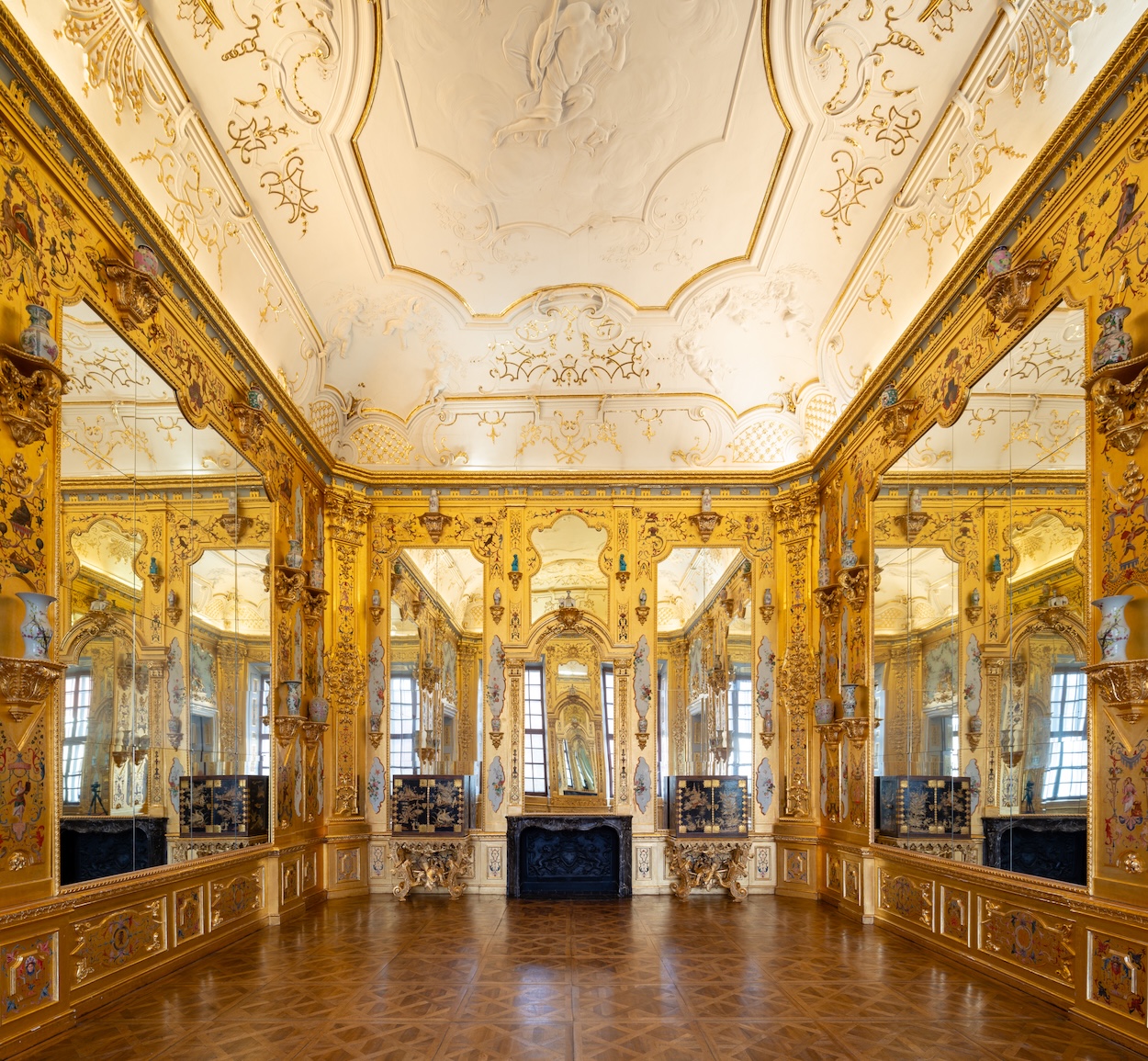
Back outside, the immaculate parterre gardens and the view down to the Lower Belvedere are inviting, a breath of fresh air and a perfect picnic spot. However, unless you have a specific temporary exhibition in mind, there is little to justify the entrance fee to the second palace. If you do go in, it has some similarly spectacular rooms, although the Gold Cabinet is closed for restoration at present. And don’t overlook the stable block, where the Belvedere store their overflow collection of Renaissance art. Stacked and racked though it is, there is a helpful catalogue so you can see what’s what, and it is voyage of discovery as well as a wonderfully quiet space away from the crowds. There is also a small, less formal and beautifully planted Privy Garden, only accessible to ticket holders.
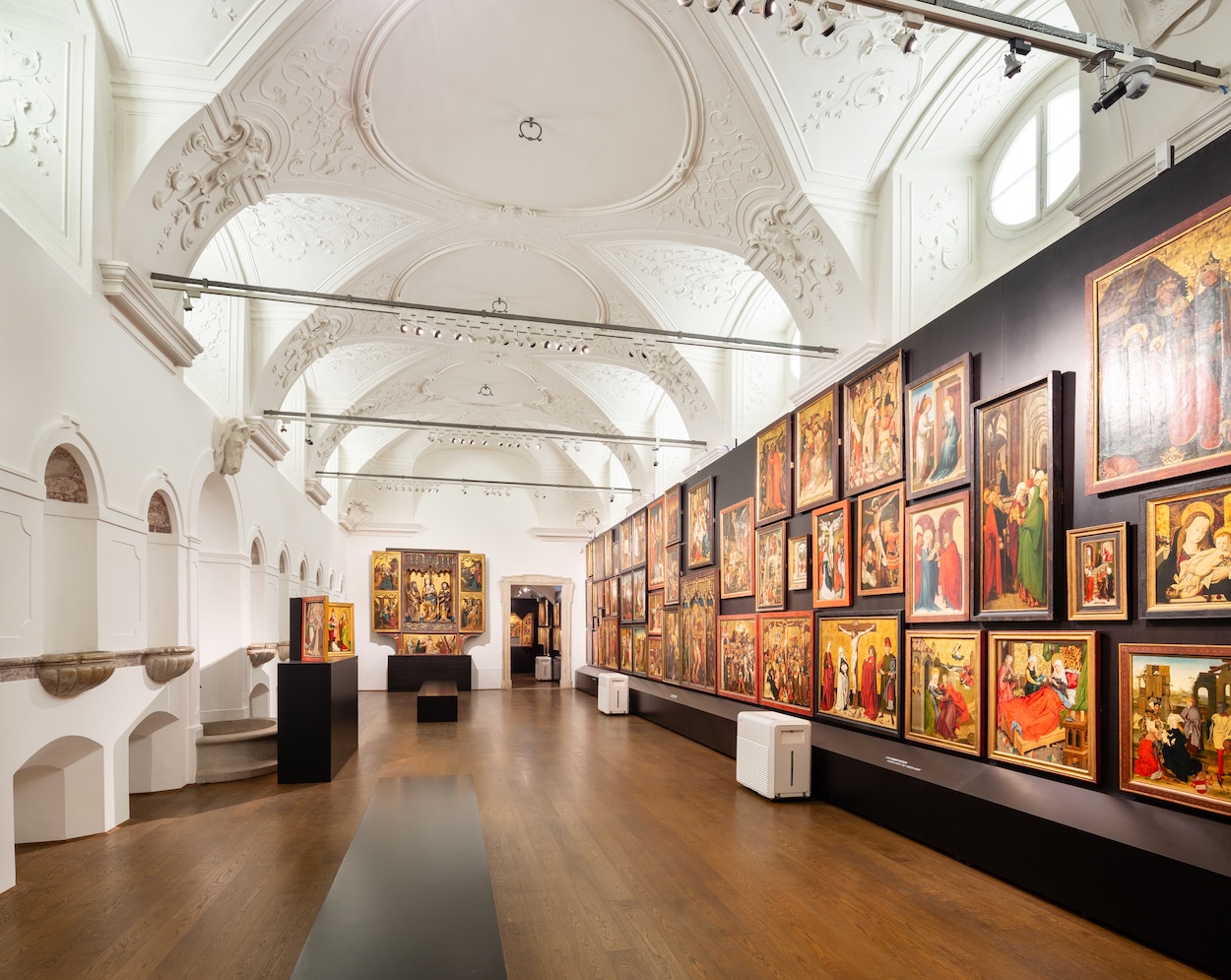
Like all Viennese museums, the Belvederes discourage bags and have excellent cloakroom and (refundable) locker facilities. There are stylish cafes at both palaces, serving a nice but limited selection of soups, sandwiches and pastries. You can book audio guides for an extra fee (although I personally think they should be included in the ticket price).
The Belvedere is slightly inconveniently placed between U-Bahn (metro) stops, but is nonetheless only a fifteen-minute walk from either Südtiroler Platz or Taubstummengasse. There are also tram stops nearby, the closest being Schloss Belvedere.
The Lower palace is open 10-6 daily, the Upper opens an hour earlier at 9 am.
You can book tickets online for specific timeslots and I would certainly advise you to do so – it is also cheaper than paying on the door. Prices vary slightly, but standard entrance is around €19. You also have the choice of buying a reduced ticket to both the Upper and Lower Museums if that is what you want to do – around €28. (There are other combination options if you want to include the Belvedere 21). I would also suggest going perhaps first thing in the morning and heading straight for the first floor if you want to minimise crowds and maximise your Klimt experience.
* * *

Catriona Miller is an independent art historian and writer on art based in the UK. She has taught and lectured on all aspects of art history and is currently researching women artists in British collections and issues of nationalism and identity in nineteenth-century landscape painting.
https://www.instagram.com/cmillerartlife/
https://twitter.com/cmillerartlife